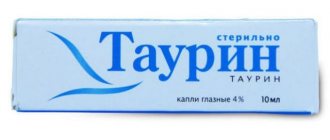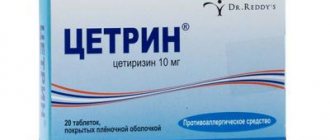Pharmachologic effect:
Roxera is a hypolipidemic agent. The active ingredient of the drug, rosuvastatin, is a selective, competitive inhibitor of HMG-CoA reductase, an enzyme that converts 3-hydroxy-3-methylglutaryl coenzyme A into mevalonic acid, a cholesterol precursor. The main target of action of rosuvastatin is the liver, where cholesterol synthesis (C) and LDL catabolism occur. Increases the number of hepatic LDL receptors on the cell surface, increasing the uptake and catabolism of LDL, which in turn leads to inhibition of VLDL synthesis, thereby reducing the total amount of LDL and VLDL. Rosuvastatin reduces elevated plasma concentrations of LDL cholesterol (LDL-C), total cholesterol, triglycerides (TG), and increases the concentration of high-density lipoprotein cholesterol (HDL-C). It also reduces the concentration of apolipoprotein B (ApoB), non-HDL cholesterol, VLDL cholesterol, TG-VLDL and increases the concentration of apolipoprotein AI (Apo A-1) in the blood plasma.
Rosuvastatin reduces the ratio of LDL-C/HDL-C, total cholesterol/HDL-C and non-HDL-C/HDL-C and the ApoB/ApoA-1 ratio. The therapeutic effect develops within one week after the start of therapy, after 2 weeks of treatment it reaches 90 % of the maximum possible effect. The maximum therapeutic effect is usually achieved by the 4th week of therapy and is maintained with further regular use of the drug. Directions for use and dosage:
Inside, do not chew or crush the tablet, swallow it whole with water, can be taken at any time of the day, regardless of meals.
Before starting therapy with Roxera, the patient should begin to follow a standard cholesterol-lowering diet and continue to follow it during treatment. The dose of the drug should be selected individually, depending on the goals of therapy and the therapeutic response to treatment, taking into account recommendations for target plasma lipid concentrations.
The recommended initial dose for patients starting to take the drug, or for patients transferred from taking other HMG-CoA reductase inhibitors, should be 5 or 10 mg of Roxera once a day.
When using the drug simultaneously with gemfibrozil, fibrates, nicotinic acid at a dose of more than 1 g/day, an initial dose of 5 mg is recommended for patients. When choosing the initial dose, you should be guided by the individual concentration of cholesterol in the blood plasma and take into account the possible risk of developing cardiovascular complications; the potential risk of side effects must also be taken into account. If necessary, the dose can be increased after 4 weeks.
Due to the possible development of side effects when using a dose of 40 mg / day, compared with lower doses of the drug, increasing the dose to 40 mg / day after additional use of a dose higher than the recommended initial dose for 4 weeks of therapy can only be carried out in patients with severe degree of hypercholesterolemia and a high risk of developing cardiovascular complications (especially in patients with familial hypercholesterolemia) who have not achieved the desired result of therapy when using a dose of 20 mg/day and who will be under medical supervision. Particularly careful monitoring of patients receiving the drug at a dose of 40 mg/day is recommended.
It is not recommended to use a dose of 40 mg/day in patients who have not previously consulted a doctor. After 2–4 weeks of therapy and/or when increasing the dose of Roxera, monitoring of lipid metabolism parameters is necessary (dose adjustment is required if necessary).
Patients with renal failure. No dosage adjustment is required in patients with mild or moderate renal impairment. In patients with severe renal failure (creatinine clearance less than 30 ml/min), the use of Roxera is contraindicated. The use of the drug in a dose of more than 30 mg/day in patients with moderate to severe renal failure (creatinine clearance less than 60 ml/min) is contraindicated. For patients with moderate renal failure, the recommended initial dose of the drug is 5 mg/day.
Patients with liver failure. Roxera is contraindicated in patients with active liver disease. There is no experience with the use of the drug in patients with liver failure above 9 points (class C) on the Child-Pugh scale.
Use in elderly patients. Patients over the age of 65 years are recommended to start using the drug with a dose of 5 mg/day.
Roxera 10 mg
Roxera
Tradename
ROXERA®
About the drug
Roxera is a lipid-lowering drug that reduces cholesterol in the blood.
Indications and dosage
Indications for use of the drug are:
- mixed dyslipidemia or primary hypercholesterolemia (as an addition to the diet if non-drug therapy methods are ineffective - weight loss, physical activity, etc.);
- familial homozygous hypercholesterolemia (as an addition to the previous treatment method);
- hypertriglyceridemia type IV (as an addition to the diet);
- the development of atherosclerosis in patients who are prescribed therapy to reduce plasma concentrations of cholesterol and LDL cholesterol;
- primary prevention of heart diseases (arterial revascularization, myocardial infarction, stroke) in patients with a predisposition to coronary artery disease, as well as in the elderly;
Before prescribing the drug, the patient must begin to adhere to a standard cholesterol-lowering diet and not violate it during the treatment period.
The tablets are taken orally, without chewing and with plenty of water, regardless of meals. At the same time, the dosage is determined individually, based on the complexity of the disease and the therapeutic response, taking into account the standards of lipid balance in the blood serum, the individual concentration of cholesterol in the body and the risk of developing cardiovascular diseases.
The initial dose of the drug is 5-10 mg 1 time per day. The same dosage is prescribed to patients who have switched from other HMG-CoA reductase inhibitors or are simultaneously taking drugs containing nicotinic acid, gembifibrozil and fibrate. If the situation allows and no side effects occur, after 4 weeks the dose of the drug can be increased.
Exceeding the dose of 40 mg/day is possible only in patients with an acute form of hypercholesterolemia and a high likelihood of developing or worsening heart disease, moreover, if they have the opportunity to be under constant medical supervision and if a dose of 20 mg/day has not given positive results. You should not use a dose of 40 mg/day if the patient has not previously been seen by a doctor.
Overdose
Clinical cases of drug overdose have not been described. When taking more than one dose of the drug, its pharmacological properties do not change.
Treatment of overdose is symptomatic under close monitoring of the liver and CPK. There is no antidote, hemodialysis is not effective.
Side effects
From the immune system: angioedema and other reactions associated with hypersensitivity.
From the nervous system: dizziness, headache, memory loss, polyneuropathy.
From the gastrointestinal tract: stomach pain, nausea, constipation, pancreatitis, hepatitis, jaundice, diarrhea, increased activity of liver transaminases.
Skin: itching, rash, Stevens-Jones syndrome.
From the skeleton and muscular system: myalgia, myopathy, rhabdomyolysis.
From the urinary system: proteinuria, hematuria.
General: asthenia.
Contraindications
Contraindications for use of the drug up to 30 ml/day:
- liver disease in an active form, including an excess of the norm of liver transaminases in the blood plasma by more than 3 times in relation to the ULN;
- severe renal failure;
- history of myotoxic complications;
- myopathy;
- simultaneous therapy with cyclosporine;
- pregnancy and breastfeeding;
- women of childbearing age who are not using effective methods of contraception;
- lactose intolerance, glucose-galactose malabsorption syndrome, lactase deficiency;
- age under 18 years;
- hypersensitivity to the components of the drug.
Indications for use of doses above 30 mg/day:
- liver disease in the active phase and the accumulation of transaminases in the blood is more than 3 times higher;
- renal failure, including acute;
- simultaneous use of cyclosporine;
- history of myotoxic complications;
- myopathy;
- pregnancy and lactation;
- childbearing age of women who do not use reliable methods of contraception;
- history of muscle diseases;
- history of myotoxicity when taking fibrates or HMG-CoA reductase inhibitors;
- synchronous use of fibrates;
- alcohol consumption;
- lactase deficiency, lactose intolerance, glucose-galactose malabsorption syndrome;
- age 18 years;
- hypersensitivity to the components of the drug;
- representatives of the Mongoloid race.
The drug should be used with extreme caution in patients over 65 years of age who suffer from arterial hypotension, sepsis, who have undergone trauma, surgery, and with metabolic, endocrine and electrolyte disorders, as well as in the presence of uncontrolled seizures and the simultaneous use of ezetimibe.
Interaction with drugs and alcohol
Taking cyclosporine together with rosuvastatin provokes an increase in the AUC of the latter up to 7 times, and the concentration in the blood exceeds 11 times. At the same time, rosuvastatin has no effect on the accumulation of cyclosporine in serum.
When the drug interacts with indirect anticoagulants such as warfarin, the INR may increase. But when Roxer is discontinued, the indicators decrease, so treatment with rosuvastatin while taking anticoagulants is possible with monitoring of the INR.
Interaction with ezentimibe is not accompanied by an increase in AUC or Cmax, but possible side effects associated with the manifestation of adverse reactions from muscles cannot be excluded.
Interaction with gemfibrozil and other lipid-lowering drugs leads to a 2-fold increase in Cmax and AUC of rosuvastatin and can provoke the development of myopathy.
When taking rosuvastatin and fibrates simultaneously, the dose should be 5 mg/day.
The interaction of rosuvastatin and HIV protease inhibitors significantly increases the concentration of the drug in the blood serum.
But when interacting with antacids, the concentration of the active substance of the drug in the blood is reduced by 50%. Although if you take antacids at intervals of 2 hours after Roxera, the effect is slightly weakened.
The interaction of rosuvastatin with hormonal contraceptives may increase the AUC of norgestrel and ethinyl estradiol by 34% and 26%, respectively. Therefore, you should be careful when choosing the dosage of hormonal contraceptives.
No clinically significant results were observed when rosuvastatin interacted with digoxin.
Composition and properties
The active component of Roxera is calcium rosuvastatin.
Additional substances: lactose, microscopic cellulose, colloidal silicon dioxide, magnesium stearate.
The shell contains: dimethylaminoethyl methacrylate, butyl methacrylate, methyl methacrylate copolymer, lactose monohydrate, macrogol 6000 and titanium dioxide.
The release form of the drug is white, convex, round, coated tablets with a chamfer and dosage markings on each tablet, the core is also white.
The active substance of the drug is a competitive, selective inhibitor of HMG-CoA reductase. Metabolized mainly in the liver, the site of cholesterol formation and LDL catabolism. Increases the number of hepatic LDL receptors on the cell surface, increasing the uptake and catabolism of LDL, which leads to inhibition of the synthesis of very low density lipoproteins (VLDL), thereby reducing the total amount of LDL and VLDL.
The effectiveness of the drug is visible within one week of use, and in the second week the benefit of the drug reaches 90% of the possible therapeutic effect. The maximum effect is observed at 4 weeks of treatment, which must be maintained by further regular use of the drug.
The maximum concentration of rosuvastatin in blood plasma is achieved within 5 hours after administration. In this case, the perfect bioavailability is approximately 20%. Metabolism occurs mainly in the liver, the main source of cholesterol synthesis. The drug is excreted almost unchanged (90%) through the intestines, and the remaining part (10%) through the kidneys.
The drug should be stored out of reach of children at a temperature of about 30*C for no more than 2 years.
general information
- Sales form:
on prescription
- Current issue:
Rosuvastatin
- Manufacturer:
KRKA, d.d., Novo Mesto, Slovenia
- Pharm. group:
Medicines used as metabolic correctors
ATX code
- Drugs for the treatment of diseases of the cardiovascular system
- Lipid-lowering drugs
- Hypocholesterolemic and hypotriglyceridemic drugs
- HMG CoA reductase inhibitors
- Rosuvastatin
Special populations
When studying the pharmacokinetic parameters of rosuvastatin in patients belonging to different ethnic groups, an increase in the systemic concentration of rosuvastatin was noted among the Japanese and Chinese. This fact should be taken into account when using Roxera in this group of patients. When using doses of 10 and 20 mg/day, the recommended initial dose for patients of the Mongoloid race is 5 mg/day. For patients of the Mongoloid race, the use of the drug at a dose of 40 mg is contraindicated.
Patients predisposed to myotoxic complications. The use of the drug at a dose of 40 mg in patients predisposed to the development of myotoxic complications is contraindicated. If it is necessary to use doses of 10 and 20 mg/day, the recommended initial dose for this group of patients is 5 mg. When used with gemfibrozil, the dose of Roxera should not exceed 10 mg/day.
Roxera 20 mg
Roxera. Instructions for use
The effective dose is selected by the doctor based on the patient’s diagnosis and the results of his examination. A blood test for cholesterol levels is required.
Treatment should begin with the minimum dosage of the drug. It is possible to evaluate the effectiveness of therapy only 1 month after starting treatment with Roxera. To do this, a blood test is performed to measure cholesterol levels. The drug is taken orally at any convenient time, regardless of meals.
The maximum permissible dosage is 40 mg. If there is a history of kidney disease, the maximum dose is 30 mg. For episodes of myasthenia gravis in the past, if complications associated with weakness of the muscular system occur, no more than 20 mg per day. During simultaneous treatment with drugs of the fibrate group, it is allowed to prescribe rosuvastatin in an amount of no more than 10 mg per day.
In representatives of the Mongoloid race, the rate of absorption of rosuvastatin exceeds similar dosages in Caucasians and Negroids. Therefore, the maximum dosage of 40 mg of the active substance is prohibited for the Chinese and Japanese.
For patients over 70 years of age, the drug is prescribed at a dose of 5 mg. For the prevention of atherosclerosis and other diseases of the cardiovascular system, the effective dosage is 20 mg of the drug.
Treatment of children and adolescents begins with 5 mg of rosuvastatin per day, the maximum dose is 20 mg of the drug.
Use during pregnancy
Pregnancy and breastfeeding are an absolute contraindication to taking Roxera. During treatment, women should use reliable contraception.
Drug interactions:
Cyclosporine. With simultaneous use of rosuvastatin and cyclosporine, the AUC of rosuvastatin is on average 7 times higher than the value observed in healthy volunteers. The plasma concentration of rosuvastatin increases 11 times. Concomitant use with rosuvastatin does not affect the concentration of cyclosporine in the blood plasma.
Indirect anticoagulants. As with other HMG-CoA reductase inhibitors, initiating rosuvastatin therapy or increasing its dose in patients taking concomitant indirect anticoagulants (eg warfarin) may lead to an increase in MHO. Discontinuation of rosuvastatin or reduction in its dose may lead to a decrease in MHO. In such cases, MHO monitoring is recommended.
Ezetimibe. The simultaneous use of rosuvastatin and ezetimibe is not accompanied by a change in the AUC or Cmax of both drugs. However, a pharmacodynamic interaction between rosuvastatin and ezetimibe, manifested by an increased risk of developing adverse reactions from muscles, cannot be excluded.
Gemfibrozil and other lipid-lowering drugs. The simultaneous use of rosuvastatin and gemfibrozil leads to a 2-fold increase in Cmax and AUC of rosuvastatin. Gemfibrozil, fenofibrate, other fibrates and lipid-lowering doses of nicotinic acid (doses greater than or equivalent to 1 g/day) increased the risk of myopathy when used concomitantly with HMG-CoA reductase inhibitors (possibly due to the fact that they can cause myopathy and when used in monotherapy). The simultaneous use of fibrates and rosuvastatin in a daily dose of 30 mg is contraindicated. In such patients, therapy should begin with a dose of 5 mg/day.
Roxera 5 mg
HIV protease inhibitors. Concomitant use of HIV protease inhibitors can significantly increase plasma concentrations of rosuvastatin. The simultaneous use of 20 mg of rosuvastatin and a combination of two HIV protease inhibitors (400 mg of lopinavir/100 mg of ritonavir) is accompanied by an increase in the equilibrium AUC0-24 and Cmax of rosuvastatin by 2 and 5 times, respectively.
Antacids. The simultaneous use of rosuvastatin and antacids containing aluminum and magnesium hydroxide leads to a decrease in the plasma concentration of rosuvastatin by approximately 50%. This effect is less pronounced if antacids are used 2 hours after taking rosuvastatin.
Erythromycin. The simultaneous use of rosuvastatin and erythromycin leads to a decrease in the AUC0–t of rosuvastatin by 20% and its Cmax by 30%. This interaction may occur as a result of increased intestinal motility caused by the use of erythromycin.
Hormonal contraceptives/hormone replacement therapy. The simultaneous use of rosuvastatin and hormonal contraceptives increases the AUC of ethinyl estradiol and norgestrel by 26 and 34%, respectively. This increase in plasma concentration should be taken into account when selecting the dose of hormonal contraceptives.
There are no pharmacokinetic data on the simultaneous use of rosuvastatin and hormone replacement therapy; therefore, a similar effect cannot be excluded when using this combination. However, this combination was widely used during clinical trials and was well tolerated by patients.
Other medications. No clinically significant interaction between rosuvastatin and digoxin is expected.
Cytochrome P450 isoenzymes. Rosuvastatin is neither an inhibitor nor an inducer of cytochrome P450. In addition, rosuvastatin is a weak substrate for this isoenzyme system.
No clinically significant interaction was observed between rosuvastatin and fluconazole (inhibitor of CYP2C9 and CYP3A4 isoenzymes) and ketoconazole (inhibitor of CYP2A6 and CYP3A4 isoenzymes). The simultaneous use of rosuvastatin and itraconazole (inhibitor of the CYP3A4 isoenzyme) increases the AUC of rosuvastatin by 28%, which is clinically insignificant. Thus, cytochrome P450-related interactions are not expected. Very important information that is not always taken into account when taking medications. If you take two or more drugs, they can either weaken or strengthen each other's effects. In the first case, you will not get the expected effect from the drug, and in the second, you risk causing an overdose or even poisoning. Pregnancy and lactation:
Roxera is contraindicated during pregnancy and lactation.
Women of reproductive age should use adequate methods of contraception.
Since cholesterol and substances synthesized from cholesterol are important for fetal development, the potential risk of inhibiting HMG-CoA reductase to the fetus outweighs the benefit of using the drug during pregnancy.
If pregnancy occurs during therapy, use of the drug should be discontinued immediately.
There is no data on the excretion of rosuvastatin in breast milk (it is known that other HMG-CoA reductase inhibitors can be excreted in breast milk), therefore the use of the drug must be discontinued during breastfeeding. Many medications can adversely affect the embryo or fetus and even lead to malformations of the unborn child. In addition, drugs taken with mother's milk enter the baby's body and act on it. Therefore, pregnant and lactating women should be very careful when using medications.
Roxera 15 mg
Side effect:
Classification of the frequency of side effects: very often - >1/10; often - >1/100, but <1/10; uncommon - >1/1000, but <1/100; rarely - >1/10000, but <1/1000; very rarely - <1/10000, including isolated reports. The incidence of side effects depends on the dose taken. From the immune system: rarely - hypersensitivity reactions, including angioedema. From the side of the central nervous system: often - headache, dizziness; very rarely - polyneuropathy, memory loss. From the digestive system: often - constipation, nausea, abdominal pain; rarely - pancreatitis, increased activity of liver transaminases; very rarely - jaundice, hepatitis, diarrhea. From the skin: infrequently - itching, rash, urticaria; very rarely - Stevens-Johnson syndrome. From the musculoskeletal system and connective tissue: often - myalgia; rarely - myopathy (including myositis) and rhabdomyolysis; very rarely - arthralgia. A dose-dependent increase in creatine phosphokinase (CPK) activity has been observed in a small number of patients taking rosuvastatin. In most cases it is minor, asymptomatic and temporary. If CPK activity increases to more than 5 times the ULN, therapy should be suspended. From the urinary system: often - proteinuria (less than 1% of patients receiving a dose of 10-20 mg / day and about 3% of patients receiving a dose of 40 mg / day). In most cases, proteinuria decreases or disappears during therapy and does not indicate the occurrence of acute or progressive concomitant kidney disease; very rarely - hematuria. General disorders: often - asthenia. Laboratory indicators: increased CK activity, glucose concentration, bilirubin, GGTP activity, alkaline phosphatase, change in plasma concentration of thyroid hormones. Almost all medications cause side effects. As a rule, this occurs when taking medications in maximum doses, when using a medication for a long time, or when taking several medications at once. Individual intolerance to a particular substance is also possible. This can lead to serious consequences, so if the medicine causes side effects for you, you should stop taking it and consult a doctor.
Side effect
Classification of the frequency of side effects: very often (> 1/10), often (> 1/100, but <1/10), infrequently (> 1/1000, but <1/100), rarely (> 1/10,000 , but <1/1000), very rarely (<1/10,000), including isolated reports.
The incidence of side effects depends on the dose taken.
From the immune system: rarely - hypersensitivity reactions, including angioedema.
From the side of the central nervous system: often - headache, dizziness; very rarely - polyneuropathy, memory loss.
From the digestive system: often - constipation, nausea, abdominal pain; rarely - pancreatitis, increased activity of liver transaminases; very rarely - jaundice, hepatitis, diarrhea.
From the skin: infrequently - itching, rash, urticaria; very rarely - Stevens-Johnson syndrome.
From the musculoskeletal system: often - myalgia; rarely - myopathy (including myositis) and rhabdomyolysis; very rarely - arthralgia. A dose-dependent increase in CPK activity is observed in a small number of patients taking rosuvastatin. In most cases it is minor, asymptomatic and temporary. If CPK activity increases to more than 5 times the ULN, therapy should be suspended.
From the urinary system: often - proteinuria (less than 1% of patients receiving a dose of 10-20 mg / day, and about 3% of patients receiving a dose of 40 mg / day). In most cases, proteinuria decreases or disappears during therapy and does not indicate the occurrence of acute or progressive concomitant kidney disease. Very rarely - hematuria.
General disorders: often - asthenia.
Laboratory indicators: increased CK activity, glucose concentration, bilirubin, GGT activity, alkaline phosphatase, change in plasma concentration of thyroid hormones.
Indications for use:
primary hypercholesterolemia according to Fredrickson (type IIa) or mixed dyslipidemia (type IIb) as an addition to diet when diet and other non-drug treatment methods are ineffective (for example, exercise, weight loss); familial homozygous hypercholesterolemia as an addition to diet and other lipid-lowering therapy (eg LDL apheresis) or if such therapy is not effective; hypertriglyceridemia (Fredrickson type IV) as an addition to the diet; to slow the progression of atherosclerosis as an addition to diet in patients who are indicated for therapy to reduce plasma concentrations of cholesterol and LDL-C; primary prevention of major cardiovascular complications (stroke, myocardial infarction, arterial revascularization) in adult patients without clinical signs of coronary heart disease (CHD), but with an increased risk of its development (age over 50 years for men and over 60 years for women, increased plasma concentration of C-reactive protein (? 2 g/l) in the presence of at least one of the additional risk factors, such as: arterial hypertension, low plasma concentration of HDL-C, smoking, early onset of coronary artery disease in a family history). We warn you! You should not prescribe medication to yourself using the information in this section. The effect of drugs is very individual, and only a doctor should prescribe them.
Contraindications:
Daily dose up to 30 mg; hypersensitivity to rosuvastatin or any of the components of the drug; liver diseases in the active phase (including a persistent increase in the activity of liver transaminases and an increase in the activity of liver transaminases in the blood serum by more than 3 times compared to ULN); severe renal failure (creatinine Cl less than 30 ml/min); myopathy; simultaneous use of cyclosporine; patients predisposed to the development of myotoxic complications; pregnancy, breastfeeding period; use in women of childbearing age who do not use adequate methods of contraception; lactose intolerance, lactase deficiency, glucose-galactose malabsorption syndrome; age up to 18 years. Daily dose of 30 mg or more; hypersensitivity to rosuvastatin or any of the components of the drug; liver diseases in the active phase (including a persistent increase in the activity of liver transaminases and an increase in the activity of liver transaminases in the blood serum by more than 3 times compared to ULN); moderate to severe renal failure (creatinine Cl less than 60 ml/min); myopathy; simultaneous use of cyclosporine; patients predisposed to the development of myotoxic complications; pregnancy, breastfeeding period; use in women of childbearing age who do not use adequate methods of contraception; hypothyroidism; history of muscle diseases (including family); history of myotoxicity with the use of other HMG-CoA reductase inhibitors or fibrates; excessive alcohol consumption; conditions that can lead to increased concentrations of rosuvastatin in blood plasma; simultaneous use of fibrates; lactose intolerance, lactase deficiency, glucose-galactose malabsorption syndrome; patients of the Mongoloid race; age up to 18 years. With caution Daily dose up to 30 mg There is a risk of developing myopathy/rhabdomyolysis - renal failure, hypothyroidism, a history of hereditary muscle diseases (including family) and a previous history of muscle toxicity when using other HMG-CoA reductase inhibitors or fibrates; excessive alcohol consumption; age over 65 years; conditions in which an increase in plasma concentration of rosuvastatin is noted; race (Mongoloid race - Japanese and Chinese); simultaneous use with fibrates; history of liver disease; sepsis; arterial hypotension; major surgery, trauma, severe metabolic, endocrine or electrolyte disturbances or uncontrolled seizures, concomitant use with ezetimibe. Daily dose 30 mg or more Mild renal failure (creatinine Cl more than 60 ml/min); age over 65 years; history of liver disease; sepsis; arterial hypotension; major surgery, trauma, severe metabolic, endocrine or electrolyte disturbances or uncontrolled seizures, concomitant use with ezetimibe.
special instructions
Renal dysfunction
In patients receiving high doses of rosuvastatin (particularly 40 mg/day), tubular proteinuria was observed, which was detected using test strips and in most cases was intermittent or short-term. Such proteinuria does not indicate acute or progression of concomitant renal disease. The incidence of serious renal dysfunction observed in post-marketing studies of rosuvastatin is higher when taking a dose of 40 mg/day. In patients taking Roxera® at a dose of 30 or 40 mg/day, it is recommended to monitor kidney function indicators during treatment (at least once every 3 months).
Effect on the musculoskeletal system
The following musculoskeletal effects have been reported with rosuvastatin at all doses, but particularly at doses greater than 20 mg/day: myalgia, myopathy, and in rare cases, rhabdomyolysis. Very rare cases of rhabdomyolysis have been reported with the simultaneous use of HMG-CoA reductase inhibitors and ezetimibe. This combination should be used with caution, because A pharmacodynamic interaction cannot be excluded.
As with other HMG-CoA reductase inhibitors, the incidence of rhabdomyolysis during post-marketing use of Roxera® is higher when using a dose of 40 mg/day.
Determination of CPK activity
CPK activity cannot be determined after intense physical activity and in the presence of other possible reasons for the increase in its activity; this may lead to incorrect interpretation of the results obtained. If the initial CPK activity is significantly exceeded (5 times higher than the ULN), a repeat analysis should be performed after 5-7 days. Therapy cannot be started if the results of re-analysis confirm the initial high activity of CPK (more than 5 times the ULN).
Before starting therapy
Depending on the daily dose, Roxera® should be administered with caution to patients with existing risk factors for myopathy/rhabdomyolysis, or the use of the drug is contraindicated. These factors include:
- renal dysfunction;
- hypothyroidism;
- history of muscle diseases (including family);
- history of myotoxic effects when taking other HMG-CoA reductase inhibitors or fibrates;
- excessive alcohol consumption;
— age over 65 years;
- conditions in which the concentration of rosuvastatin in the blood plasma may increase;
- simultaneous use of fibrates.
In such patients, it is necessary to evaluate the risks and possible benefits of therapy. Clinical monitoring is also recommended. If the initial CPK activity is more than 5 times higher than the ULN, therapy with Roxera® cannot be started.
During drug therapy
The patient should be informed to immediately report to the doctor if muscle pain, muscle weakness or spasms occur unexpectedly, especially in combination with malaise and fever. In such patients, CPK activity should be determined. Therapy should be discontinued if CPK activity is significantly increased (more than 5 times the ULN) or if muscle symptoms are severe and cause daily discomfort (even if CPK activity is no more than 5 times the ULN). If symptoms disappear and CPK activity returns to normal, consideration should be given to resuming the use of Roxera® or other HMG-CoA reductase inhibitors in lower doses with careful medical supervision. Monitoring CPK activity in the absence of symptoms is impractical.
There were no signs of increased effects on skeletal muscles when taking rosuvastatin and concomitant therapy. However, an increase in the number of cases of myositis and myopathy has been reported in patients taking other HMG-CoA reductase inhibitors in combination with fibric acid derivatives (for example, gemfibrozil), cyclosporine, nicotinic acid in lipid-lowering doses (more than 1 g / day), antifungal agents - azole derivatives, HIV protease inhibitors and macrolide antibiotics.
When used simultaneously with certain HMG-CoA reductase inhibitors, gemfibrozil increases the risk of developing myopathy. Thus, the simultaneous use of Roxera® and gemfibrozil is not recommended (at doses less than 30 mg/day). The benefits of further changes in plasma lipid concentrations with the combined use of Roxera® with fibrates or nicotinic acid in lipid-lowering doses must be carefully weighed taking into account the possible risks. Rosuvastatin at a dose of 30 mg/day or more is contraindicated for combination therapy with fibrates.
Due to the increased risk of rhabdomyolysis, Roxera® should not be used in patients with acute conditions that may lead to myopathy or conditions predisposing to the development of renal failure (for example, sepsis, arterial hypotension, major surgery, trauma, severe metabolic, endocrine and electrolyte disturbances or uncontrolled seizures).
Liver
Depending on the daily dose, Roxera® should be used with caution in patients with excessive alcohol consumption and/or a history of liver disease or its use is contraindicated.
It is recommended to determine liver function tests before the start of therapy and 3 months after its start. The use of Roxera® should be discontinued or the dose reduced if the activity of hepatic transaminases in the blood serum is 3 times higher than the ULN.
In patients with hypercholesterolemia due to hypothyroidism or nephrotic syndrome, treatment of underlying diseases should be carried out before starting treatment with Roxera®.
Ethnic characteristics
During pharmacokinetic studies, an increase in the plasma concentration of rosuvastatin was noted in Mongoloids compared with Caucasians.
The drug Roxera® contains lactose, and therefore it should not be used in patients with lactose intolerance, lactase deficiency, or glucose-galactose malabsorption syndrome.
Impact on the ability to drive vehicles and operate machinery
Studies have not been conducted to study the effect of Roxera® on the ability to drive vehicles and operate machinery. However, given the possibility of developing dizziness and other side effects, caution must be exercised when driving vehicles and other mechanisms that require increased concentration and speed of psychomotor reactions.







